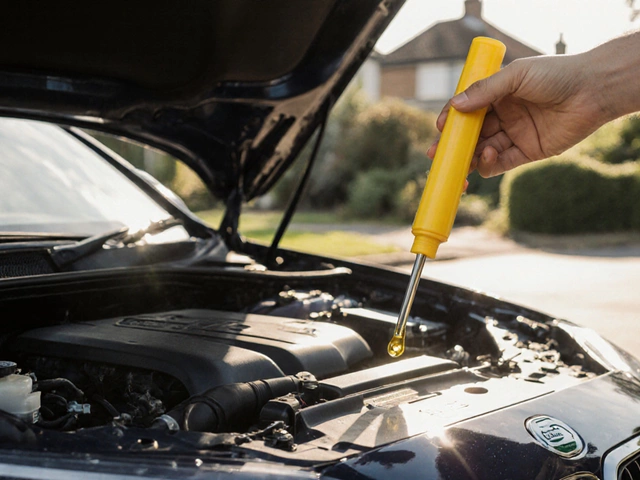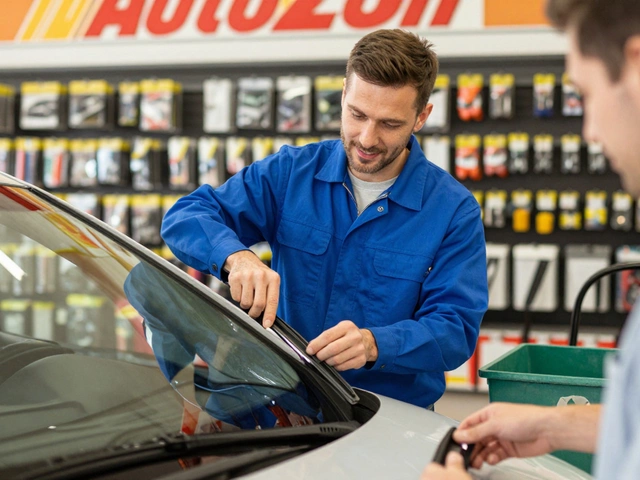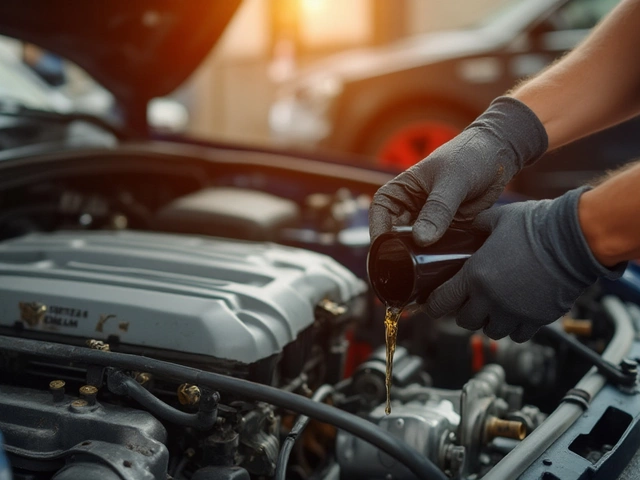So you're driving down the road and notice your car isn't as smooth as it used to be. Maybe you're feeling every bump, or there's an odd clunking noise coming from under the hood. Sounds familiar? Welcome to the world of suspension issues.
A car's suspension is like its backbone; it ensures a comfy ride by absorbing the shock from uneven roads. But when this system goes south, it’s more than just annoying—it's a safety concern. No need to panic, though! Most suspension problems can be fixed.
Let’s dig into what might be causing the problem, how you can spot the signs, and whether you can roll up your sleeves for some DIY repairs, or if it's time to call in the pros. Trust me, knowing how to handle suspension woes can save you a lot of hassle and money in the long run!
- Understanding Car Suspension
- Common Suspension Problems
- Signs Your Suspension Needs Attention
- Repairing vs. Replacing Suspension Parts
- DIY Tips for Minor Fixes
- When to Seek Professional Help
Understanding Car Suspension
Ever wondered what makes your car glide over bumps without fuss? That's the magic of the car’s suspension system. Think of it as the unsung hero ensuring your rides are smooth and stable. But how does it actually work?
The suspension system is a mix of several parts—springs, shock absorbers, and linkages connecting your car to its wheels. Each plays a key role in keeping everything balanced. The springs support the vehicle's weight and absorb large shocks, while shock absorbers dampen those pesky bounces back to a manageable level. The linkages keep the car stable and aligned, preventing it from rolling over. Together, these parts work to maximize friction between the tires and the road surface, which is crucial for steering and braking.
Here's a breakdown of the primary suspension components:
- Springs: Coil, leaf, or torsion bar springs absorb the impact from the road.
- Shock Absorbers: Also known as dampers, these control and cushion the spring’s movement.
- Linkages: These keep the wheels aligned correctly with the car’s frame.
- Stabilizer Bars: Also called anti-roll bars, they reduce body roll during quick cornering.
Did you know that bad suspension parts can mess with your steering accuracy and tire life? Regular check-ups can prevent these costly problems. But hey, what's life without a few surprises, right? If you're not sure about the health of your system, a quick bounce-test might be a good start. Push down firmly on the hood or trunk of your car, and if it bounces more than twice, you've got some suspension work to do!
Here's an interesting nugget: Most cars, SUVs, and trucks use a mix of different suspension types front and back, like independent and dependent systems. This combination aims to give you the best handling and comfort simultaneously. Keeping your suspension in check can seriously boost your ride quality, making every drive more enjoyable—and safer.
Common Suspension Problems
Okay, friends, let's tackle some of those nagging suspension repair issues that might be bugging you. One of the first things you might notice is that rough ride. If your car feels like an old rollercoaster, your shocks or struts might be worn out. These are the parts that help soften the blow when you hit a pothole. When they're failing, your car won't handle bumps like a champ.
Another headache can be poor steering response. Ever tried turning your wheel and felt it wasn't as snappy as before? You might be dealing with worn suspension bushings or a problem with the tie rods. These are vital for maintaining control, and when they wear out, turning becomes a chore.
Let's not forget about noises. If you hear clunking or banging from your car's undercarriage, it's often an indicator of loose or damaged suspension parts like control arms or ball joints. Ignoring these noises could lead to more significant damage later.
- Leaking Shocks or Struts: Look for oil dripping around the shock area. If you see dampness, replacement might be necessary.
- Uneven Tire Wear: If your tires are more worn on one side than the other, your alignment is probably off due to suspension issues.
- Vehicle Pulling to One Side: This could mean alignment problems or unequal tire pressure, pointing to suspension troubles.
Keeping an eye out for these problems can prevent them from escalating into expensive car suspension fix jobs. Regularly checking and maintaining your suspension parts ensures not just a smooth ride but also enhances vehicle safety.
And hey, if you’re tracking any of these issues, here's a handy table with some quick stats on how suspension problems can affect you:
| Problem | Effect on Vehicle |
|---|---|
| Worn Shocks/Struts | 35% increase in stopping distance |
| Uneven Tires | 25% faster tire wear |
| Poor Alignment | 20% more fuel consumption |
Keep these points in mind, and you’ll handle any suspension issues like a pro!
Signs Your Suspension Needs Attention
Figuring out if your car's suspension is playing up is pretty crucial because the sooner you catch it, the easier (and usually cheaper) the fix. So, how can you tell if your suspension is waving a red flag?
First up, if you're feeling like you're off-roading while cruising on a city street, it's time to take note. A bumpy ride can often mean something's up with your suspension system. Also, pay attention to any clunking or knocking noises when you hit a pothole or bump. Those sounds might be shouting that your suspension parts are worn out.
Another sign is if your vehicle is pulling to one side while driving straight. This can be a sign of uneven tire wear due to suspension issues or wheel alignment problems. If you're constantly correcting your steering wheel to keep the car straight, it's time to have your suspension checked.
- Visible Sagging: If your car seems to be sagging or dipping more on one side, or if the back sags with a slight load, this could indicate weak springs.
- Unbalanced Tire Wear: Regularly check your tires. If they're wearing out too quickly or unevenly, it might be due to a bad suspension or alignment issues.
- Delayed Stopping: Notice your car diving forward during braking? It might be your shocks or struts that need attention.
Here's a quick reference table to make things clearer:
| Symptom | Possible Cause |
|---|---|
| Bumpy ride | Worn shocks/struts |
| Pulling to one side | Alignment/suspension issue |
| Clunking noises | Worn suspension parts |
Remember, keeping an eye out for these signs is essential for maintaining your car's health and keeping those repair bills from mushrooming. So don't ignore these hints your car's giving you!

Repairing vs. Replacing Suspension Parts
When you're staring down a bumpy ride or hearing suspicious noises, you might wonder, should I repair or replace my car's suspension? It's a common conundrum for anyone dealing with suspension repair.
The first step is to figure out the severity of the problem. Minor issues, like a torn rubber boot or a loose connection, might just need a quick fix. Components like bushings or tie rods can often be replaced easily without throwing the whole system into chaos. This is typically a more wallet-friendly option unless heavily worn parts are involved.
On the flip side, if you've got a major hitch, like a bent or damaged strut, it might be time for a complete replacement. This can offer better durability and performance if your old parts have simply hit the end of their life. Plus, fully replacing lets you avoid patching things up repeatedly, saving you from more headaches down the road.
If you're on the fence, consider your ride's age and mileage. Older cars with tons of miles might benefit more from a complete overhaul, ensuring everything's in top-notch condition. But for newer rides with isolated issues, targeted repairs can be just as effective.
Here's something to keep in mind:
- Always weigh the cost of individual repairs against the price of a full replacement. Sometimes what seems cheap upfront might cost you more in the long run.
- Consider the quality and compatibility of parts. Using high-quality, compatible components can extend your vehicle's life significantly.
- Don't overlook professional advice. A trusted mechanic can provide insights into whether that clunking noise is just a minor hiccup or a red flag.
Whether it's repairing or replacing, picky attention to your vehicle's suspension parts keeps you rolling smoothly and safely. Sure, it might sound technical, but it's a solid investment in keeping your car, and yourself, on the road.
DIY Tips for Minor Fixes
Feeling brave and thinking about tackling some of those suspension repair tasks yourself? You might be surprised at how much you can actually do without a trip to the mechanic. Here are some simple fixes you can manage at home with just a bit of patience and elbow grease.
First things first, make sure your tools are ready. A basic tool kit, a floor jack, and jack stands are must-haves. Safety is key, so make sure your car is securely lifted before you start poking around underneath.
One common issue you might notice is a squeaky sound coming from your suspension. Often, this is due to dry bushings or joints. A simple fix? Grease them up! Check your car's service manual to find out which lubricant is best.
- Locate the noise source by gently rocking the car.
- Apply the recommended lubricant to joints or bushings.
- Check the seals and replace them if they're worn out.
If your car dips or bounces more than usual, it might be a sign that your shock absorbers are wearing out. This is a bit trickier, but you can try the bounce test. Push down hard on each corner of the car and see how quickly it stabilizes. If it bounces more than once, it might be time to replace the shocks. Here’s a quick guide:
- Use your jack to lift the car and safely secure it.
- Remove the wheel to access the shock.
- Unscrew the bolts holding the shock in place.
- Swap in the new shock absorber, securing it tightly with new bolts.
- Reattach the wheel and take your car for a test drive.
Replacing worn-out or sagging springs can also boost your car's ride height and handling. This requires unbolting the suspension components, but it’s a doable job if you’re comfortable with a wrench.
While these fixes can help, remember that there are limits to what you can do at home. If these steps don’t solve the problem, or if there are issues with wheel alignment or complex electronic components, it’s a sign to get professional help. But for many minor suspension parts repairs, your garage might be just the place to start!
When to Seek Professional Help
Alright, so you've noticed some issues with your car's suspension, and you're wondering if it's time to bring in a pro. While some suspension repair tasks are DIY-friendly, there are certain signs that scream for professional attention.
The first major sign is when your car's been bouncing more than Tigger from Winnie the Pooh! If your car continues to bounce after hitting a bump, your shock absorbers might have given up. These aren’t always easy to fix yourself unless you’re pretty handy with tools.
Another clue is uneven tire wear. If one side of your car's tires is more worn than the other, it’s a good indicator that something’s misaligned or not distributing weight correctly. Misalignments often require precision tools that standard garages are better equipped to handle.
Also, if you hear strange noises like knocking or squeaking coming from your suspension, don't wait. This could mean a bigger issue like broken struts or sway bars, which are really not safe to mess around with.
Here's a quick checklist of when to call in the pros:
- Excessive bouncing after bumps
- Uneven or rapid tire wear
- Strange noises coming from the suspension area
- Visible damage or wear on suspension parts
If you recognize any of these symptoms, it’s best to consult someone who deals with suspension parts regularly. Mechanics have the right tools and expertise to dig deeper into the problem, ensuring your car stays safe and roadworthy.




